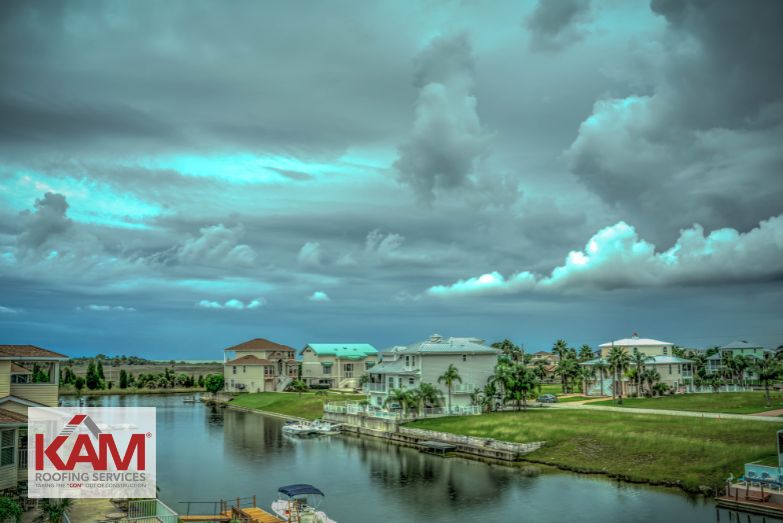Choosing the right roofing materials is crucial for homeowners, especially in areas prone to extreme weather like hurricanes, heavy rain, high winds, and intense sun. Not all roofs are created equal. The best roofing materials for extreme weather offer durability, wind resistance, water tightness, and longevity. In regions like Florida, where storms and hurricanes are frequent, selecting proper materials such as impact-rated shingles, metal, or tile roofs can help protect your home and reduce maintenance costs. Here’s what property owners, HOAs, and homeowners need to know about picking roofing materials that truly stand up to the toughest conditions.
Why Roofing Materials Matter for Extreme Weather
Your roof is your home’s first line of defense against nature’s harshest elements. Roofing materials determine how well your property will withstand:
- High winds and flying debris during hurricanes
- Torrential rain and flooding
- Prolonged exposure to sun and UV rays
- Sudden temperature swings
The impact of choosing the right materials applies to all property types, single-family homes, condos, and entire communities managed by HOAs.
Top Roofing Materials for Durability and Weather Resistance
1. Metal Roofing—Superior Wind and Fire Resistance
- Can withstand hurricane-force winds (up to 140-180 mph if professionally installed)
- Highly resistant to rain, and metal panels interlock for added strength
- Lightweight and fire-resistant
- Reflects heat, helping reduce cooling costs
2. Asphalt Shingles—Impact-Resistant and Affordable
- Popular throughout the U.S., including Florida
- Many manufacturers offer “Class 4” impact-rated options (the highest rating for resistance to hail and debris)
- Modern shingles are designed for high wind ratings, some up to 130 mph
- Cost-effective but typically have a 20-30 year lifespan
3. Tile Roofing—Classic Style and Heavy-Duty Strength
- Concrete and clay tile roofs can last 50 years or more
- Heavy weight adds stability against high winds
- Naturally resistant to fire, rot, and insects
- Requires professional installation to meet strict Florida building codes
4. Flat Roofing – Practical and Durable for Florida Homes
- Ideal for certain architectural styles, porches, and home additions
- Modern flat roofing systems, like TPO or modified bitumen, are designed for superior water resistance and UV protection
- Easy to maintain and repair when properly installed
- Best suited for low-slope areas; proper drainage is crucial to prevent pooling water
Important Considerations for Florida and Hurricane-Prone Areas
In hurricane zones like Florida, local building codes often require roofing materials to meet specific wind and impact resistance standards. Here’s what to look for:
- Wind Uplift Ratings: Choose materials tested and rated for wind speeds common to your region.
- Water Sealing: Underlayment and proper flashing are crucial for preventing leaks during sideways, wind-driven rain.
- Insurance Requirements: Some insurers offer discounts for roofs built with qualified, storm-resilient materials and installation.
The Role of Professional Installation
Even the toughest roofing materials will fail if not installed properly. For hurricane resistance:
- Hire licensed, experienced roofing contractors familiar with local codes
- Ensure proper attachment methods (nails, adhesives) are used as recommended
- Evaluate the entire roofing system, including underlayment, flashing, and ventilation
Comparing Roofing Materials: Pros & Cons
| Material | Pros | Cons |
| Asphalt Shingles | Affordable, easy to install, good wind ratings | Shorter lifespan, can lose granules |
| Metal | Extremely durable, fireproof, energy efficient | Higher upfront cost, may dent |
| Tile (Clay/Concrete) | Long lifespan, fire and wind resistant | Heavy, higher installation cost |
| Slate/Synthetic | Long-lasting, beautiful, impact-resistant | Expensive, heavy (natural slate) |
FAQs About Roofing Materials for Extreme Weather
What roofing materials are best for hurricanes?
Metal roofs, impact-rated asphalt shingles, and heavy tiles (clay/concrete) are top choices for hurricane-prone areas due to their high wind and impact resistance.
Are metal roofs better than shingles in Florida?
Metal roofs often outperform standard shingles in Florida thanks to their durability, wind resistance, and cooling benefits. High-quality shingles can also be a solid choice if they have strong wind and impact ratings.
How long do hurricane-resistant roofs last?
- Asphalt shingles: 20-30 years (longer if impact-rated)
- Metal: 40-70 years
- Tile: 50+ years
Will upgrading my roofing material lower my insurance premiums?
Upgrading to wind- and impact-resistant materials can often reduce insurance costs, but it varies by insurer and state. Always check with your agent.
Do I need to replace the whole roof to upgrade materials?
Not always, sometimes, partial upgrades or improvements (like better underlayment or fasteners) can improve performance. However, a full replacement offers maximum protection and may be required by codes or insurers in high-risk areas.
Protect Your Home With the Best Roofing Materials
Selecting the right roofing materials for extreme weather is one of the smartest decisions a property owner can make, especially in hurricane-prone regions like Florida. Prioritize durability, wind resistance, and professional installation to safeguard your investment and ensure long-lasting peace of mind.


